Audit Trails Dashboard
In today's fast-paced and highly regulated business environment, maintaining a detailed record of changes within software systems is crucial for compliance, security, and operational efficiency. The Audit Trails feature in vuSmartMaps serves this critical function by providing a comprehensive dashboard that tracks and audits backend changes across various product modules.
The Audit Trails dashboard offers an in-depth view of the modifications made to key components such as Dashboards, Alert Rules, Reports, User and User Roles, Channel Preferences, Data Model, and O11ySources. You have a User Activity Tracking section to monitor user activity on the go.
By displaying the number and nature of these changes, the Audit Trails dashboard provides valuable insights that help administrators maintain control over the system, ensure compliance with regulatory requirements, and enhance overall security. This feature is an indispensable tool for any organization looking to safeguard its data and operations in an increasingly complex digital landscape
Overview: This provides a high-level summary of key metrics, including:
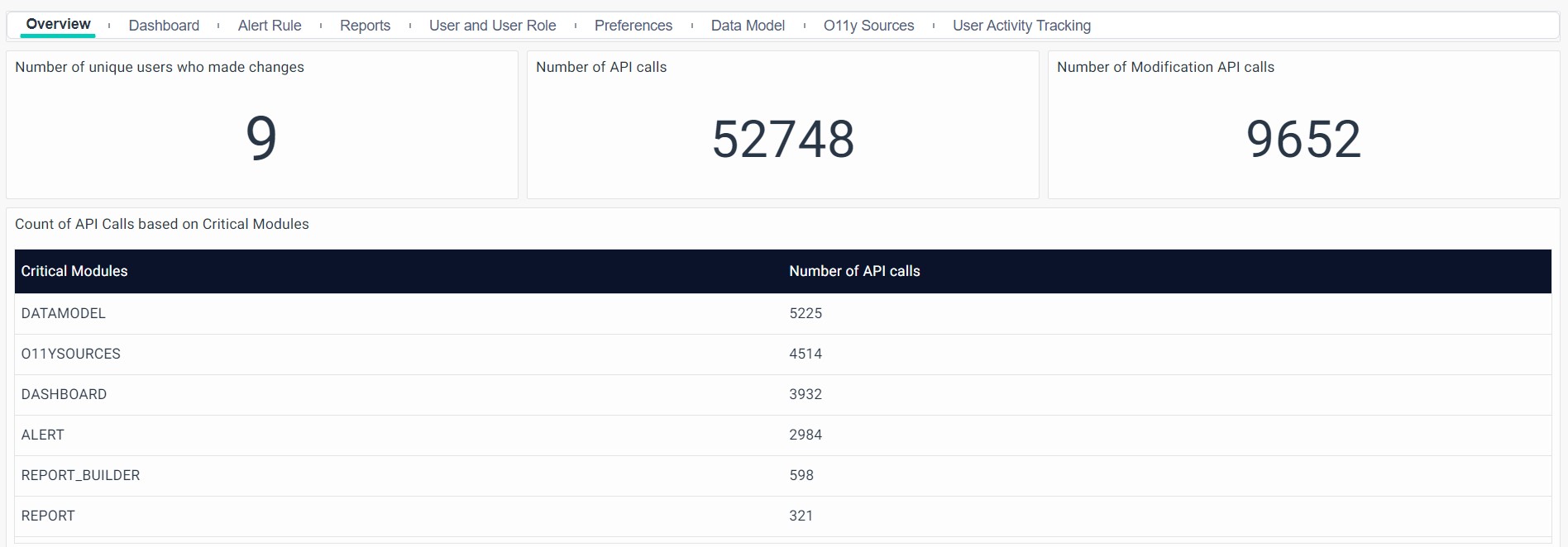
- Number of Unique Users who have made changes, offering insights into user activity and engagement.
- Number of API Calls, giving a broad picture of system interactions and usage patterns.
- Number of Modification API Calls, highlighting the specific API calls that resulted in changes to the system.
- Count of API Calls Based on Critical Modules, breaking down the API interactions by important system components to pinpoint areas of high activity or concern.
Dashboards: Monitoring changes to dashboard configurations, ensuring that visualizations and data representations remain accurate and trustworthy.

- Dashboard Name: The title or name of the dashboard that has been modified or interacted with.
- Last Action Performed User: The username or identifier of the last person who made changes or took action on the dashboard.
- Last Action Time: The date and time when the last action was performed on the dashboard.
- Last Action: A description of the most recent action that was taken on the dashboard, such as "Dashboard_Update," and "Dashboard_delete".
Alert Rules: Tracking alterations to alerting mechanisms helps maintain the integrity of notification systems.

- Alert Rule Name: The name of the alert rule that has been modified or interacted with.
- Last Action Performed User: The username or identifier of the last person who made changes or took action on the alert rule.
- Last Action Time: The date and time when the last action was performed on the alert rule.
- Last Action: A description of the most recent action that was taken on the alert rule, such as "Alert_Update" or "Alert_Delete."
Reports: Auditing updates to report templates and content, ensuring consistent and reliable data reporting.

- Report Name: The title or name of the report that has been created, modified, or interacted with.
- Last Action Performed User: The username or identifier of the last person who made changes or took action on the report.
- Last Action Time: The date and time when the last action was performed on the report.
- Last Action: A description of the most recent action that was taken on the report, such as "Report_Create," "Report_Update," or "Report_Delete."
User and User Role: Capturing changes in user roles and permissions to maintain proper access control and security.
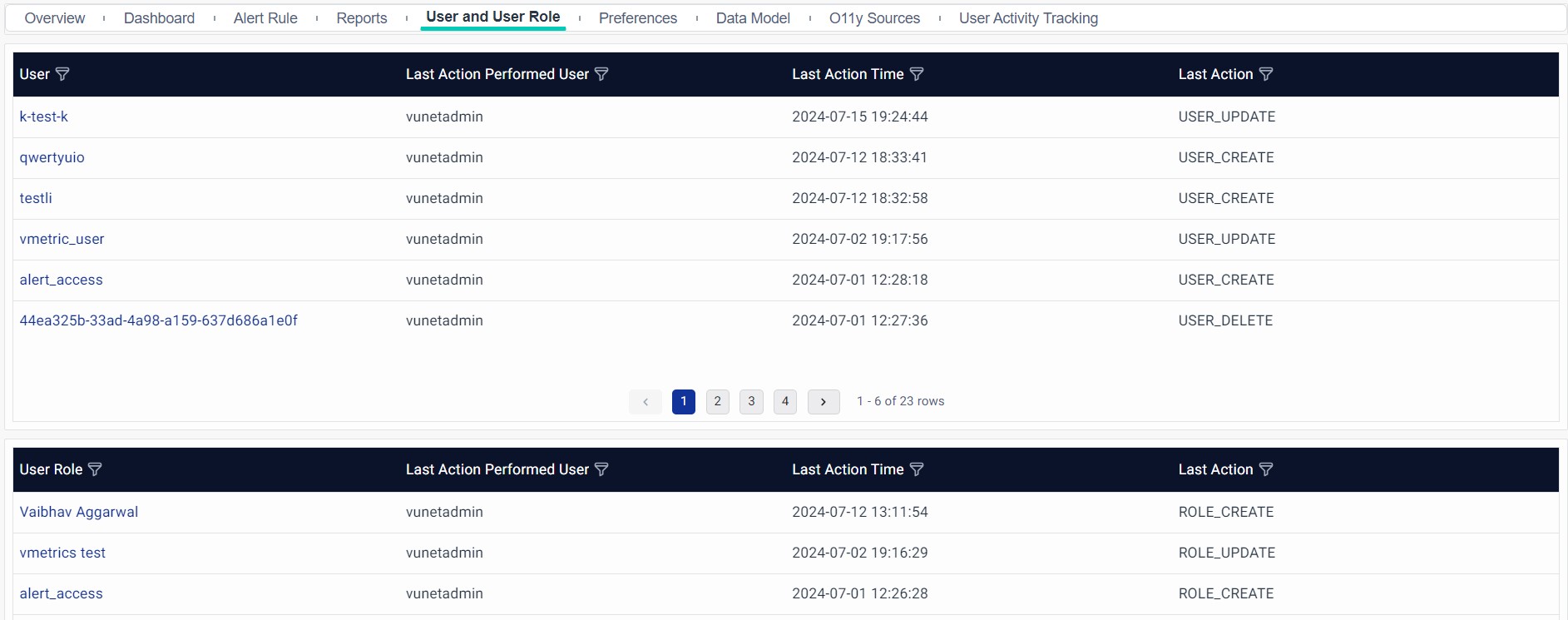
- User: The name or identifier of the user whose account or role has been created, modified, or deleted.
- Last Action Performed User: The username or identifier of the person who last made changes or took action on the user account or role.
- Last Action Time: The date and time when the last action was performed on the user account or role.
- Last Action: A description of the most recent action that was taken on the user account or role, such as "User_Create," "User_Update," or "User_Delete."
Preferences: Logging adjustments to communication channel settings, ensuring that notifications are delivered correctly.
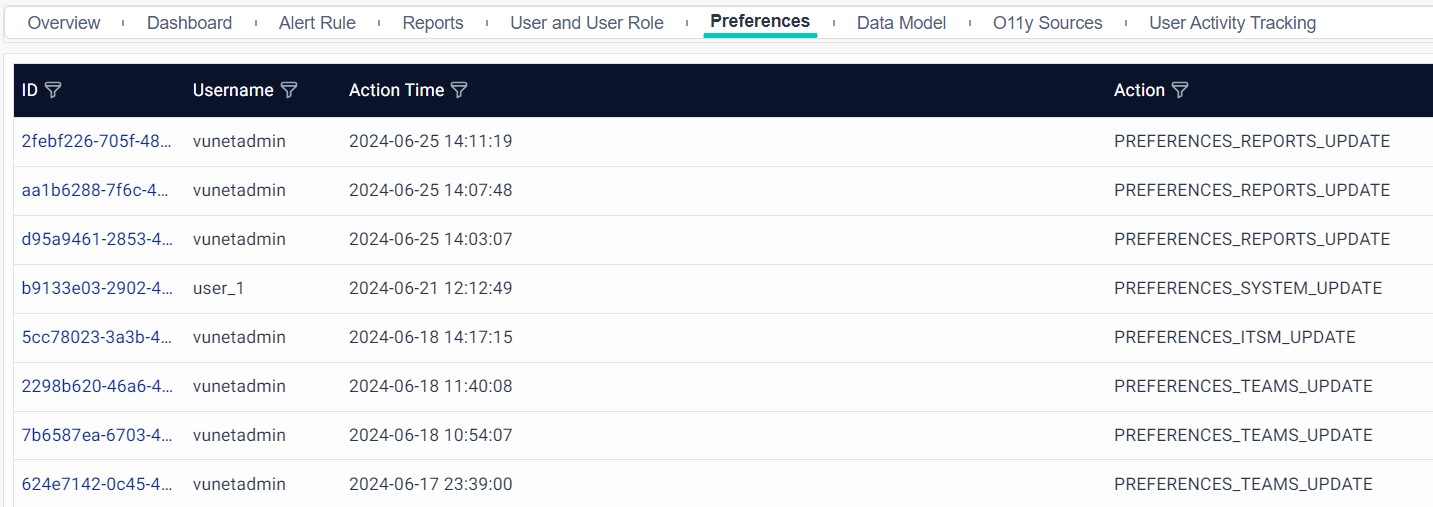
- ID: A unique identifier for the specific preference action that was performed.
- User Name: The username or identifier of the person who made changes to the preferences.
- Action Time: The date and time when the preference action was performed.
- Action: A description of the specific action taken on the preferences, such as "Preference_Reports_Update," "Preference_System_Update," or "Preference_ITSM_Update."
Data Model: Keeping track of modifications to the underlying data structures, which is essential for data integrity and consistency.

- Data Model Name: The name of the data model that has been created, modified, or deleted.
- Last Action Performed User: The username or identifier of the last person who made changes or took action on the data model.
- Last Action Time: The date and time when the last action was performed on the data model.
- Last Action: A description of the most recent action that was taken on the data model, such as "DataModel_Create," "DataModel_Update," or "DataModel_Delete."
O11ySources: Auditing changes to observability sources, ensuring accurate data collection and monitoring.
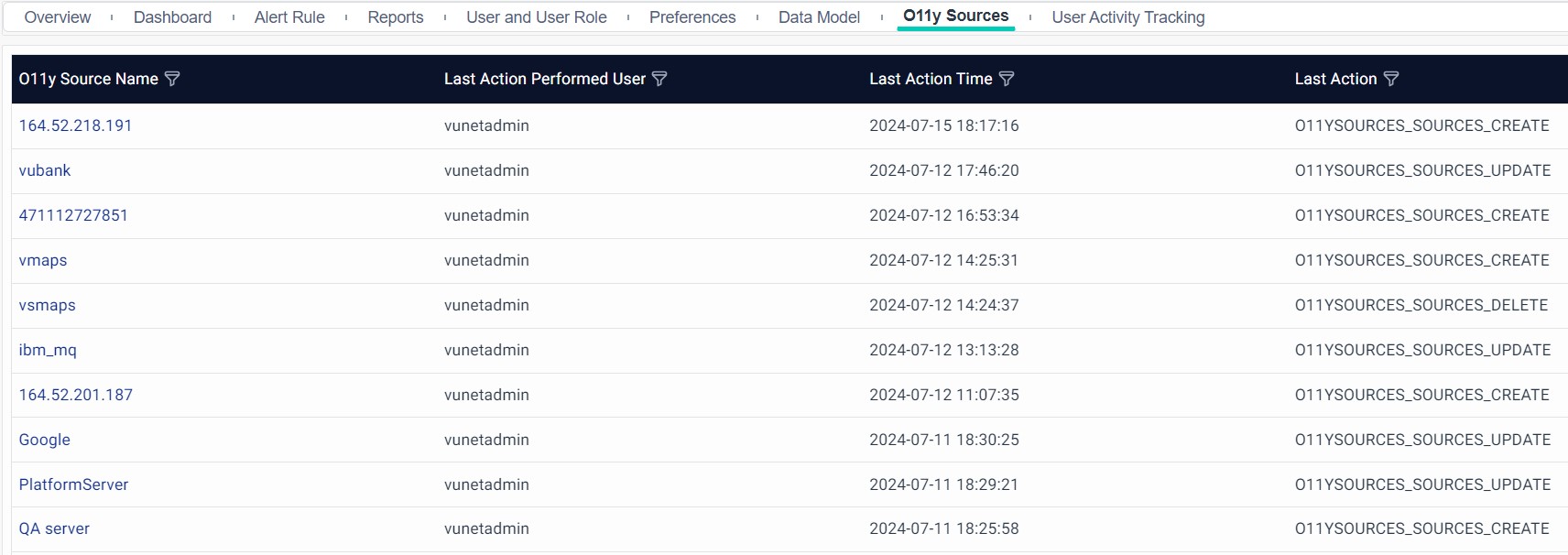
- O11ySource Name: The name of the observability source that has been created, modified, or deleted.
- Last Action Performed User: The username or identifier of the last person who made changes or took action on the observability source.
- Last Action Time: The date and time when the last action was performed on the observability source.
- Last Action: A description of the most recent action that was taken on the observability source, such as "O11ySource_Create," "O11ySource_Update," or "O11ySource_Delete."
User Activity Tracking: Monitoring user activities to detect and investigate on the go.
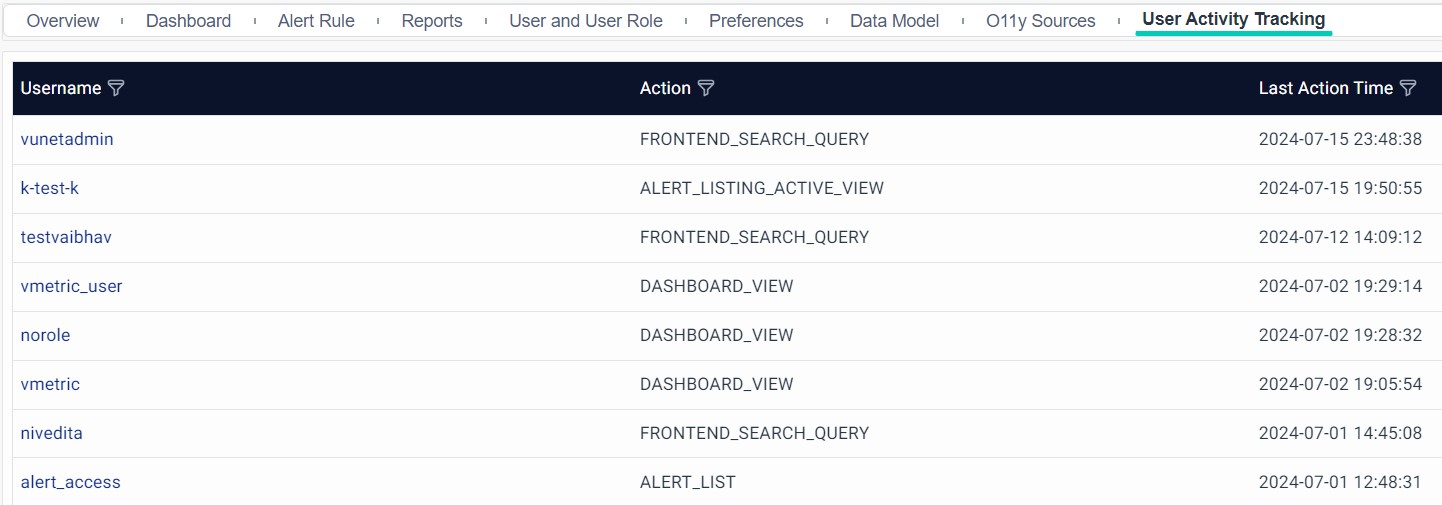
- Username: The name or identifier of the user who performed the action.
- Action: The specific activity performed by the user, such as "Frontend_Search_Query," "Alert_Listing_Active_View," "Dashboard_View," or "Alert_list."
- Last Action Time: The date and time when the user performed the last action.
